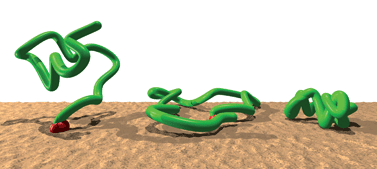Photocontrol of end-grafted lambda-phage DNA
Abstract
We study the response to light stimulation of end-grafted λ-phage DNAs in a solution of AzoTAB, a photosensitive compacting agent for the DNA chains. The biotinylated

* Corresponding authors
a
Institut Charles Sadron, Université de Strasbourg, CNRS UP 22, 23 rue du Loess, Strasbourg Cedex, France
E-mail:
marques@unistra.fr
Fax: +33 388 414 099
Tel: +33 388 414 045
b Department of Chemistry, Ecole Normale Supérieure, Paris, France
c Université Pierre et Marie Curie Paris 6, Paris, France
d UMR 8640, CNRS, France
e Fachbereich Physik, Universität Konstanz, Fach M621, Konstanz, Germany
We study the response to light stimulation of end-grafted λ-phage DNAs in a solution of AzoTAB, a photosensitive compacting agent for the DNA chains. The biotinylated

 Please wait while we load your content...
Something went wrong. Try again?
Please wait while we load your content...
Something went wrong. Try again?
Y. L. Sun, N. K. Mani, D. Baigl, T. Gisler, A. P. Schröder and C. M. Marques, Soft Matter, 2011, 7, 5578 DOI: 10.1039/C1SM05046J
To request permission to reproduce material from this article, please go to the Copyright Clearance Center request page.
If you are an author contributing to an RSC publication, you do not need to request permission provided correct acknowledgement is given.
If you are the author of this article, you do not need to request permission to reproduce figures and diagrams provided correct acknowledgement is given. If you want to reproduce the whole article in a third-party publication (excluding your thesis/dissertation for which permission is not required) please go to the Copyright Clearance Center request page.
Read more about how to correctly acknowledge RSC content.
 Fetching data from CrossRef.
Fetching data from CrossRef.
This may take some time to load.
Loading related content
